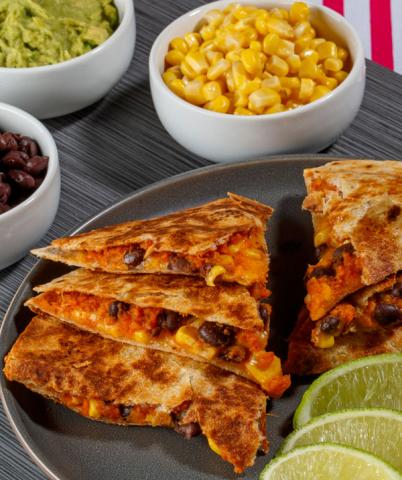
Growth of the bacterium Clostridium botulinum in home canned food may cause botulism - a deadly form of food poisoning. These bacteria exist either as spores or as vegetative cells. The spores, which are comparable to plant seeds, can survive in the soil and water for many years. When ideal conditions exist for growth, the spores produce vegetative cells, which multiply rapidly and may produce a deadly toxin within 3 to 4 days in an environment consisting of:
- a moist, low acid food
- a temperature between 40°F and 120°F, and
- less than 2 percent oxygen.
Botulinum spores are on most fresh food surfaces. Because they grow only in the absence of air, they are harmless on fresh foods. Most bacteria, yeasts, and molds are difficult to remove from food surfaces. Washing fresh food reduces their numbers only slightly. Peeling root crops, underground stem crops, and tomatoes greatly reduces their numbers. Blanching (scalding vegetables in boiling water or steam for a short time) also helps remove microorganisms. Three ways of ensuring canned foods are safe include:
Whether food should be processed in a pressure canner or boiling water canner to control botulinum bacteria depends on the acidity in the food. Acidity of foods is measured by pH. Low acid foods include red meats, seafood, poultry, and all fresh vegetables except most tomatoes. Low acid foods contain too little acidity to prevent the growth of botulinum bacteria. They have pH values higher than 4.6. Most combination of foods, such as vegetable soup, have pH values above 4.6 unless the recipes include enough lemon juice, citric acid, or vinegar to make them acid foods.
Botulinum spores are very hard to destroy at boiling water temperatures. Therefore, process all low acid foods using 10 to 15 pounds of pressure to attain temperatures of 240°F to 250°F. To assure that microorganisms in low acid foods are destroyed, use the correct time, adjusted for your elevation, and pressure specified for the food you are canning.
Acid foods generally include fruits, pickles, sauerkraut, jams, jellies, marmalades, and fruit butters. These foods contain enough acid to prevent the growth of Clostridium botulinum spores, therefore boiling water temperatures are high enough to kill the vegetative form of Clostridium botulinum and render the products safe. The pH value of acid foods is 4.6 or lower.
Tomatoes are usually considered an acid food, although some varieties are known to have pH values slightly above 4.6. If tomatoes are to be canned as acid foods, these products must be acidified to a pH of 4.6 or lower with vinegar, bottled lemon juice, or citric acid. See an up to date, research tested recipe for instructions on how much acid to add to tomatoes. Tomatoes may be processed in a boiling water canner, atmospheric steam canner, or pressure canner. You must process jars for the correct number of minutes, adjusted for your elevation with each method.
A vacuum seal is needed to prevent air and microorganisms from entering a closed jar. Here is how a vacuum seal is created. When the lid is applied to the jar at room temperature, the atmospheric pressure is the same inside and outside the jar. When the jar is heated, the air and the food inside the jar expand leading to a build-up of pressure inside the jar. Throughout the heating process this pressure is released as air from the headspace escapes under the lid. This occurs repeatedly throughout the processing time and is called venting. Be aware that there is air in the tissue of the food (especially raw packed food) that creates more air than was originally seen in the headspace.
Venting occurs in small amounts throughout the processing time. As the jar cools after processing, the contents shrink and a partial vacuum forms. There is a state of negative pressure in the jar. The sealing compound on the underside of the canning lid forms around the top of the jar and prevents air from re-entering the jar. When the vacuum seal forms, the lid will curve towards the jar. When you open a sealed jar, there should be a rush of air into the jar to equalize the pressure.
Use Up to Date, Research Tested Recipes
Canning food is a method to keep food safe for later consumption. All steps in preparing, cooking, and canning foods need to be followed. Processing times are different for each food or combination of foods. When ingredients are added or proportions of ingredients are changed, the processing time may not be correct and may not be adequate to stop the growth of bacteria, molds, and yeasts. It is important to use recipes that have been tested for safety, from sources such as your local extension office, the National Center for Home Food Preservation and at university food preservation web sites, including Nebraska Extension's http://food.unl.edu.
Return to Canning Basics
Sources:
Canning Terms: Packing and Processing, Penn State Extension
National Center for Home Food Preservation, University of Georgia Extension
USDA Complete Guide to Home Canning, National Center for Home Preservation
Publication originally written by Julie Albrecht. Updated and reviewed by Carol Larvick in 2021.
Tags:
Feedback Form
Feedback Form
If you do not see the article, please scroll up the page.







